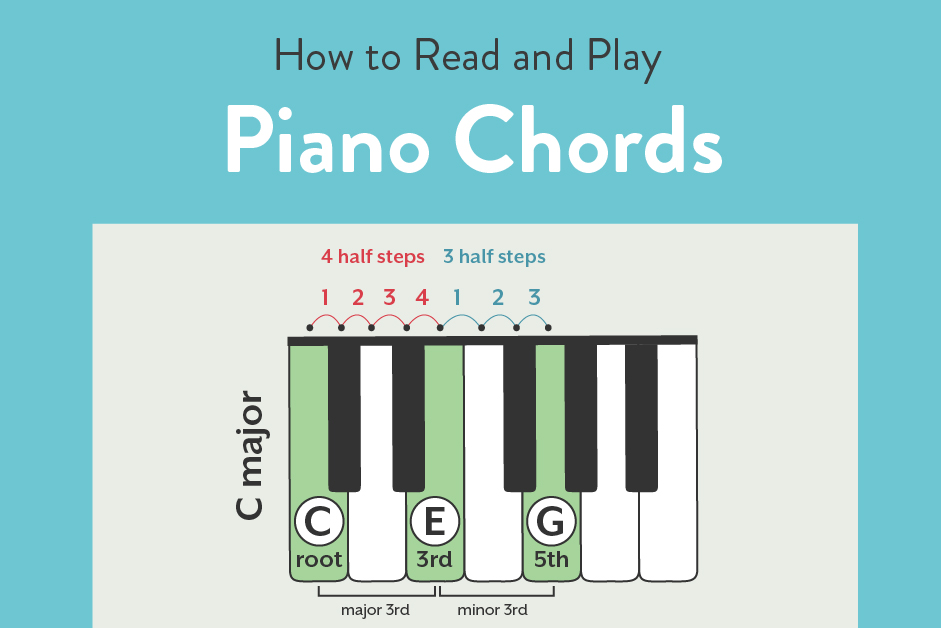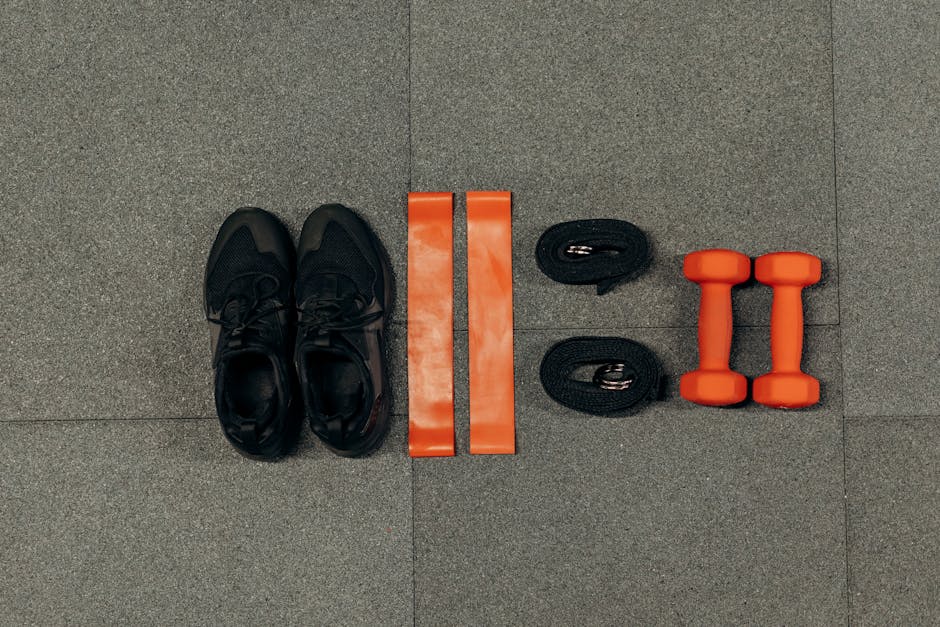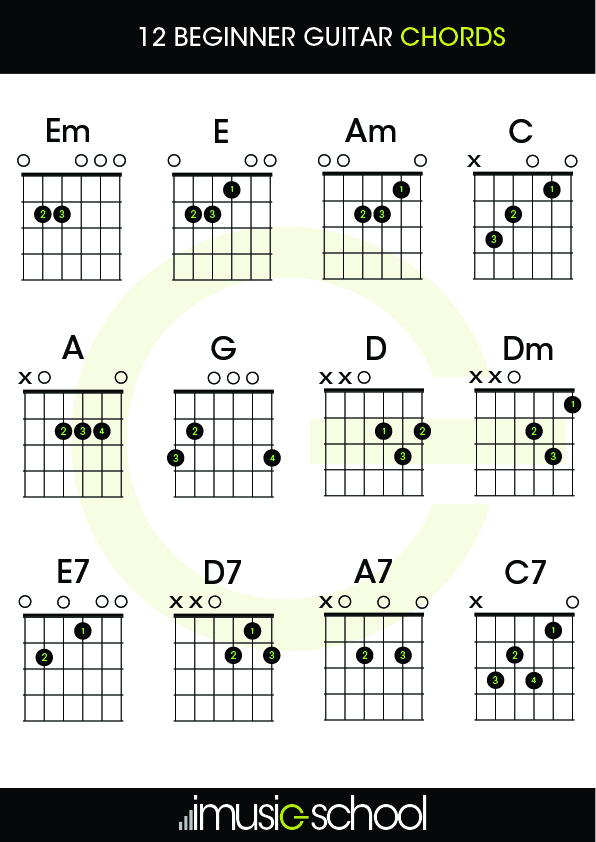Are you tired of feeling like a clumsy ogre fumbling around on your guitar? Do your chords sound more like a dying cat than a beautiful melody? Fear not, my fellow musicians, for we have the solution to all your chord-related woes! In this article, we will explore some essential exercises to help you strengthen your guitar chord skills and finally become the rock god or goddess you were always meant to be. So grab your guitar, warm up those fingers, and let’s dive into the world of chord mastery!
Contents
- 1 Understanding the Foundation: Building Blocks of Guitar Chords
- 2 Mastering the Art of Fingering: Techniques for Clean Transitions
- 3 Exploring Chord Progressions: The Path to Musical Fluidity
- 4 The Power of Practice: Strategies for Effective Workout Sessions
- 5 Expanding Your Chord Vocabulary: Beyond the Basics
- 6 Incorporating Rhythm and Timing: Bringing Chords to Life
- 7 FAQs
- 8 Rock on! Keep strumming those chords!
Understanding the Foundation: Building Blocks of Guitar Chords
So, you’ve picked up a guitar and you’re ready to rock out like a pro, but wait – what’s this about building blocks of guitar chords? Don’t worry, we’ll break it down for you in terms even your grandma could understand.
First off, let’s talk about the basic elements of a chord. You’ve got your root note, which is like the CEO of the chord – it’s the one calling the shots. Then you’ve got your third, which is like the sidekick that adds flavor and personality. Lastly, you’ve got your fifth, which is like the muscle of the group, providing stability and strength. Put these three amigos together, and you’ve got yourself a tasty chord salad.
Now, let’s get into some nitty-gritty details. There are different types of chords, like major, minor, and dominant. Think of them as different flavors of ice cream – some are sweet and pleasant, others are a bit sour and edgy. Each chord type has its own unique formula, but once you get the hang of it, you’ll be mixing and matching like a master chef in no time.
So, there you have it – the foundation of guitar chords laid out in all its glory. Practice, play around, and don’t be afraid to make mistakes. After all, even the best guitarists started off as clueless beginners at some point. And remember, music is supposed to be fun, so don’t stress about getting everything perfect right away. Just strum on, my friend!

Mastering the Art of Fingering: Techniques for Clean Transitions
When it comes to playing any instrument, mastering your fingering technique is crucial for clean transitions between notes and chords. Whether you’re a beginner or a seasoned pro, honing your fingering skills can take your playing to the next level.
Here are some techniques to help you improve your fingering:
- Practice proper hand positioning: Make sure your fingers are curved and hovering just above the strings, ready to strike at a moment’s notice.
- Use your fingertips: Avoid pressing down with the pads of your fingers, as this can muffle the sound. Instead, use the tips of your fingers for a clear, crisp tone.
- Try different fingerings: Experiment with different finger placements to find the most efficient and comfortable way to play each passage.
Remember, mastering the art of fingering takes time and dedication, so don’t get discouraged if you don’t see immediate results. Keep practicing, stay patient, and soon enough you’ll be breezing through those tricky transitions like a pro!

Exploring Chord Progressions: The Path to Musical Fluidity
Are you tired of playing the same old chords in your music? Are you looking to add some spice and flair to your songs? Well, look no further because we are diving deep into the world of chord progressions, where musical fluidity awaits!
**So, what exactly are chord progressions?**
Chord progressions are a series of chords played in a specific order that create the harmonic structure of a song. They are like the building blocks of music, guiding us along a musical journey filled with twists and turns. With the right chord progression, you can evoke different emotions and create dynamic tension in your music. It’s like the secret sauce that takes your song from bland to grand!
**How can chord progressions enhance your musical experience?**
1. **Create tension and resolution**: By using different chord progressions, you can create tension in your music that keeps listeners on the edge of their seats, waiting for that satisfying resolution.
2. **Add variety and interest**: A variety of chord progressions can add depth and complexity to your songs, keeping them fresh and exciting for both you and your audience.
3. **Express different emotions**: Each chord progression has its own unique feel and vibe, allowing you to express a wide range of emotions in your music, from joy and excitement to sadness and longing.
So, buckle up and get ready to embark on a musical journey like no other with chord progressions as your trusty guide. Who knows, you might just discover a whole new world of musical possibilities waiting to be explored!

The Power of Practice: Strategies for Effective Workout Sessions
So, you’ve decided to commit to regular workout sessions – congrats! Now, let’s talk about how to make the most out of your sweat sesh. Remember, practice makes perfect, especially when it comes to working out. Here are some strategies to help you have the most effective workout sessions:
- Set specific goals: Whether you want to run a marathon or just be able to do a push-up without collapsing, having specific goals will give your workouts purpose.
- Switch up your routine: Don’t be afraid to try new exercises and mix up your routine. Your body will thank you for the variety and you won’t get bored doing the same old thing every day.
- Listen to your body: If your body is screaming at you to take a rest day, listen to it. Pushing through pain and fatigue can lead to injuries and burnout.
Remember, Rome wasn’t built in a day and neither was your dream body. Consistency is key, so keep practicing those workout sessions and you’ll start seeing results in no time!

Expanding Your Chord Vocabulary: Beyond the Basics
So you’ve mastered the typical chords like C, G, and D – congratulations, you’re officially a chord enthusiast! But why stop there when there’s a whole world of unique and interesting chords waiting to be discovered? Let’s dive into some advanced chord shapes that will take your playing to the next level.
First up, let’s talk about sus2 and sus4 chords. These bad boys add an extra layer of depth and intrigue to your playing. Plus, they’re super easy to play – just take a basic major chord and adjust one note. Voila! You’ve got yourself a sus chord. Experiment with different combinations and find your signature sound.
Next, let’s explore some jazz-inspired voicings. Diminished and augmented chords may sound intimidating, but they’re actually quite easy to wrap your head around. Embrace the dissonance and add a touch of sophistication to your chord progressions. Your audience will thank you.
Lastly, don’t forget about those delightful extended chords like 7ths, 9ths, and 11ths. These chords are like the sprinkles on top of a cupcake – they add that extra bit of flavor that takes your playing from good to great. Mix and match different extended chords to create rich, complex harmonies that will leave your listeners begging for more. Happy chord hunting!
Incorporating Rhythm and Timing: Bringing Chords to Life
Have you ever felt like your chords are missing that certain spark that makes them come alive? Well, fear not my fellow musicians, because today we are going to talk about incorporating rhythm and timing to bring your chords to life!
First things first, let’s talk about the importance of rhythm in music. Rhythm is like the heartbeat of a song – it keeps everything in sync and makes sure that all the different elements are working together in perfect harmony. So when you’re playing chords, don’t just focus on getting the right notes, pay attention to the rhythm as well! Remember, even the most beautiful chord progression can fall flat if it’s not played with the right rhythm.
Now, when it comes to timing, think of it as the secret sauce that adds flavor to your chords. Playing with the right timing can take your chords from bland to grand in an instant. So don’t be afraid to experiment with different timings – you never know what magical musical moments you might stumble upon!
So there you have it, my fellow chord enthusiasts – remember to groove with the rhythm and play with the timing, and watch as your chords transform from ordinary to extraordinary. Keep practicing, keep experimenting, and most importantly, keep having fun with your music!
FAQs
What’s the best way to improve my chord transitions?
Well, first off, put down the Doritos bag and pick up your guitar! Practice, practice, practice is the key. Start off with simple chords and strumming patterns, then gradually increase the difficulty as you get more comfortable.
How can I build finger strength for playing difficult chords?
Forget about those hand grippers you bought off of a late-night infomercial. The best way to build finger strength is by actually playing your guitar! Start off with some basic exercises like finger push-ups (chord changes) and trill drills (rapidly switching between two fretted notes).
Are there any specific exercises that can help with barre chords?
Ah, the dreaded barre chords. Don’t worry, we’ve all been there. One great exercise is to start off by playing the E major shape barre chord and slide it up and down the neck. This will not only improve your finger strength but also help with muscle memory.
How can I improve my strumming technique while practicing chords?
It’s all in the wrist, baby! Practice different strumming patterns and rhythms to keep things interesting. Experiment with palm muting, percussive strums, and even fingerstyle picking to add some flair to your playing.
What’s the best way to stay motivated while working on my chord skills?
Reward yourself, of course! Set small goals for yourself and treat yourself to a little something special every time you reach a milestone. Whether it’s a new set of strings, a fancy guitar strap, or a giant slice of pizza, make sure to celebrate your progress along the way.
Rock on! Keep strumming those chords!
Whether you’re a beginner just getting the hang of things or a pro looking to perfect your skills, these exercises are sure to take your guitar playing to the next level. So grab your guitar, stretch those fingers, and get ready to rock out with your chords out. Keep practicing and soon enough, you’ll be the master of the fretboard. Happy strumming!



